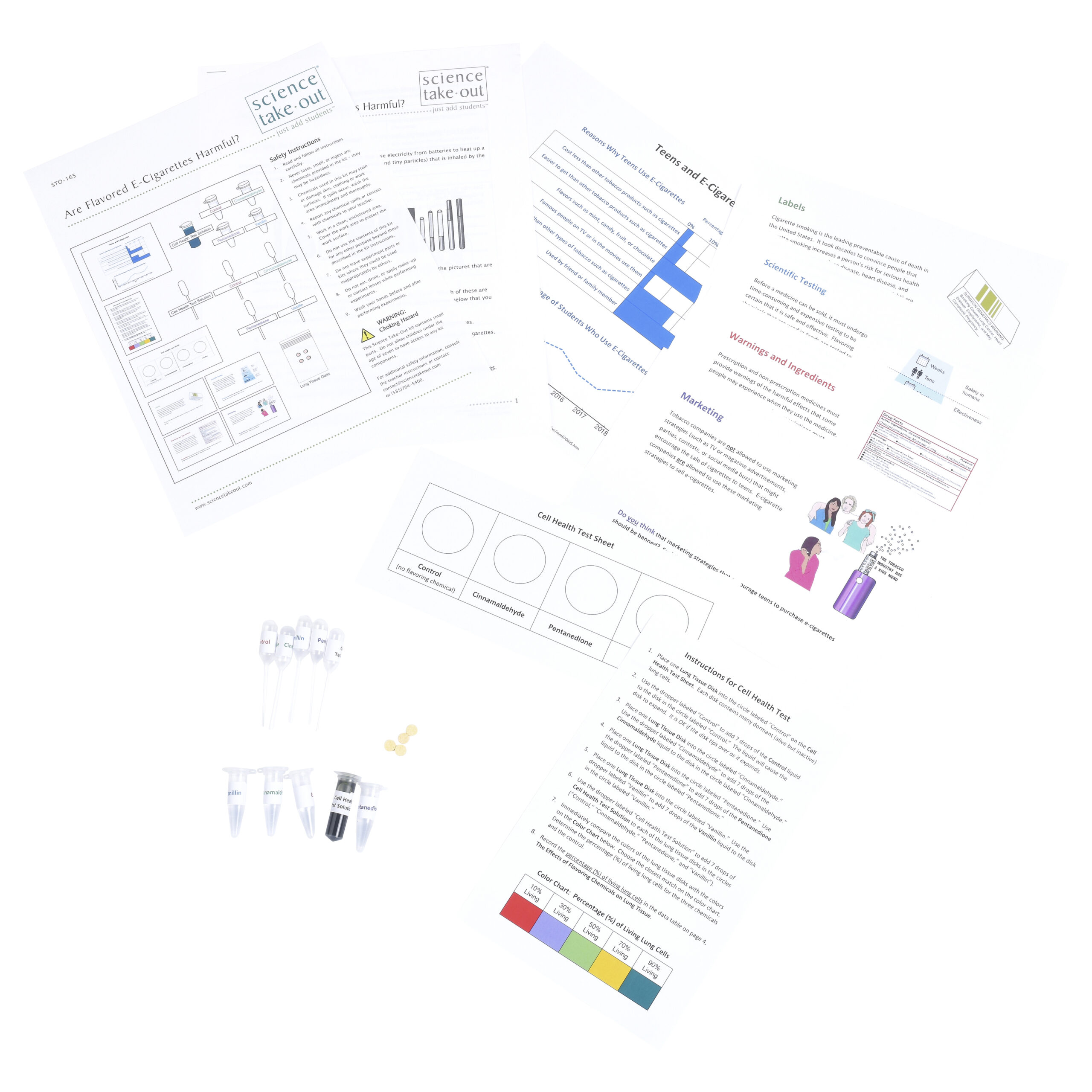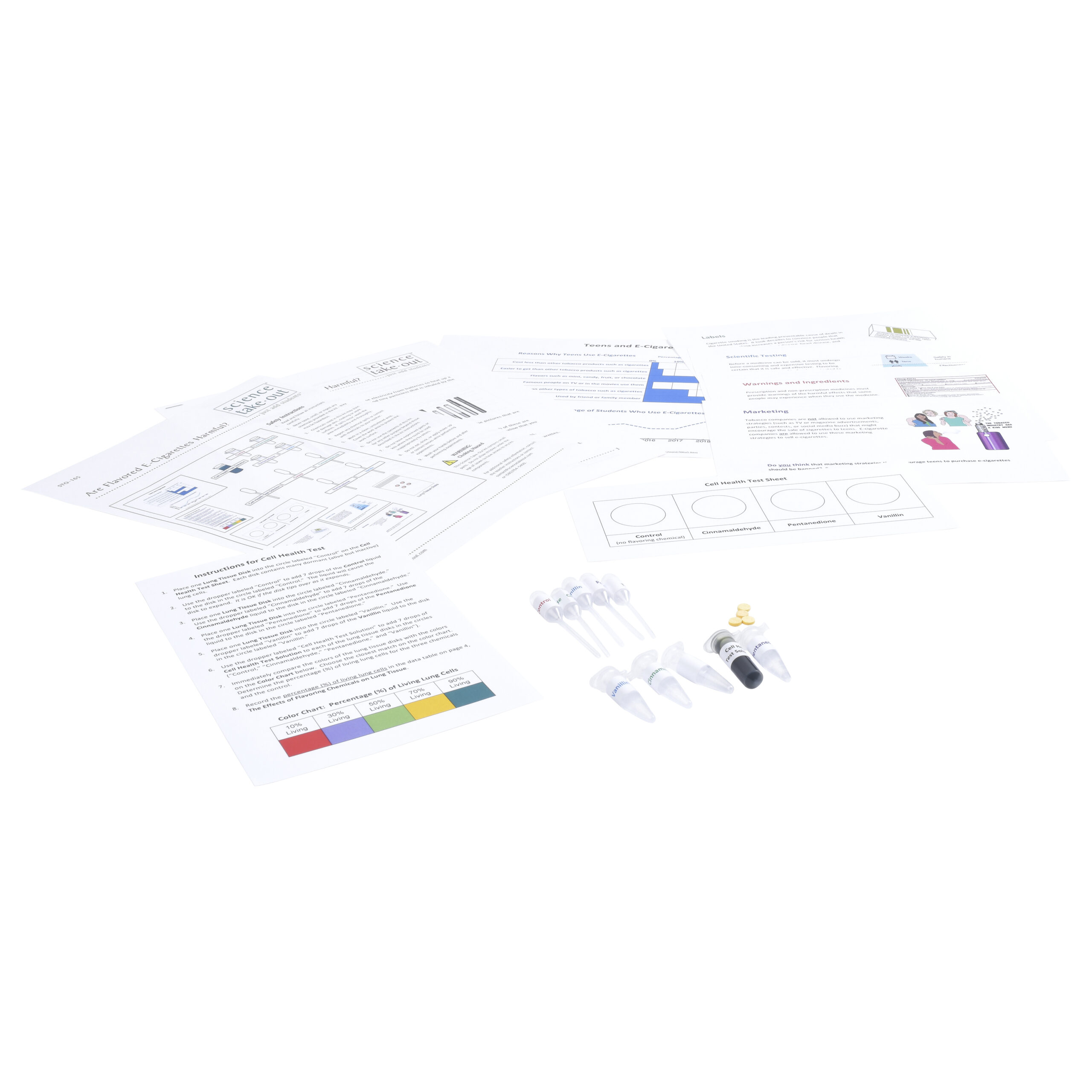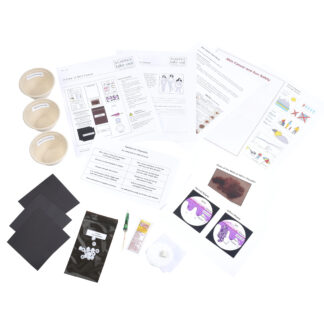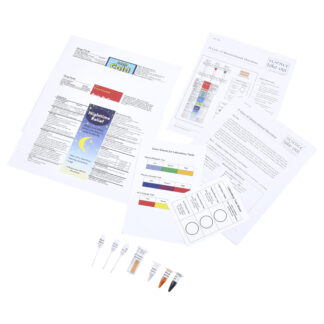Are Flavored E-cigarettes Harmful?
$14.95 – $100.95Price range: $14.95 through $100.95
Quantity Discounts Available! →
Flavoring chemicals may be safe to eat, but are they safe to vape?
People who vape flavored e-cigarettes are exposed to chemical flavorings. These flavorings may be safe to eat, but are they safe to inhale?
- Explore the importance of flavors in promoting e-cigarette use.
- Conduct simulated tests to determine the effect of flavoring chemicals on lung cells.
- Consider issues regarding regulation of e-cigarette use and advertising.
Kit Includes
- Teens and E-Cigarettes information sheet
- Instructions for Cell Health Test
- Cell Health Test Sheet
- Cell Health Test Solution (simulated)
- 4 Lung tissue disks (simulated)
- Control and 3 flavoring chemicals (simulated)
- 5 Labeled droppers
- Set of 4 cards (Labels, Scientific Testing, Warnings and Ingredients, Marketing)
Quantity Discounts
Kits:
- 1 – 9 kits: $14.95 each
- 10 – 24 kits: $14.20 each
- 25+ kits: $13.46 each
Unassembled:
- 1 – 9 packs: $100.95 each
- 10+ packs: $95.90 each
Refills:
- 1 – 9 packs: $31.95 each
- 10+ packs: $30.35 each
Correlation to Next Generation Science Standards (NGSS) Shop by NGSS »
Performance Expectations:
MS-LS1-3. Use argument supported by evidence for how the body is a system of interacting subsystems composed of groups of cells.
HS-LS1-2. Develop and use a model to illustrate the hierarchical organization of interacting systems that provide specific functions within multicellular organisms.
Science & Engineering Practices
Analyzing and Interpreting Data - Analyze and interpret data to provide evidence for phenomena.
Constructing Explanations - Apply scientific ideas, principles, and/or evidence to construct, revise and/or use an explanation for real world phenomena, examples, or events.
- Apply scientific reasoning to show why the data or evidence is adequate for the explanation or conclusion
- Apply scientific reasoning, theory, and/or models to link evidence to the claims to assess the extent to which the reasoning and data support the explanation or conclusion.
Disciplinary Core Ideas
LS1.A: Structure and Function - In multicellular organisms, the body is a system of multiple interacting subsystems. These subsystems are groups of cells that work together to form tissues and organs that are specialized for particular body functions.
- Multicellular organisms have a hierarchical structural organization, in which any one system is made up of numerous parts and is itself a component of the next level.
Crosscutting Concepts
Systems and System Models - Systems may interact with other systems; they may have sub-systems and be a part of larger complex systems.
Cause and Effect - Use cause and effect relationships to predict phenomena in natural or designed systems.





